1966 Corvette Sting Ray 427 Gets Wet Sanded and Buffed to Perfection
by Chad RaskovichThis particular Corvette is actually the second Corvette I’ve done for the owner now. It is a 1966 Corvette Sting Ray with the 425HP 427 motor. The car only has about 58,000 original miles on the clock and it received a body of restoration approximately three years prior where pretty much every nut and bolt was replaced. Needless to say, I was very eager to work on one of the worlds most sought after classic muscle cars. 😉
Upon inspection of the car the owner and I had decided upon a 2 step correction as there was only moderate swirling and a few random deep scratches. However, the more I looked at the car under the fluorescent lights of my garage the more I noticed how much the paint had shrunk down since it was first wet sanded and buffed. The overall texture of the paint had a rough distorted look to it and it lacked the smoothness, depth and gloss that you would expect in a well restored car.
Here is the car from about 10 feet away…looks great right?
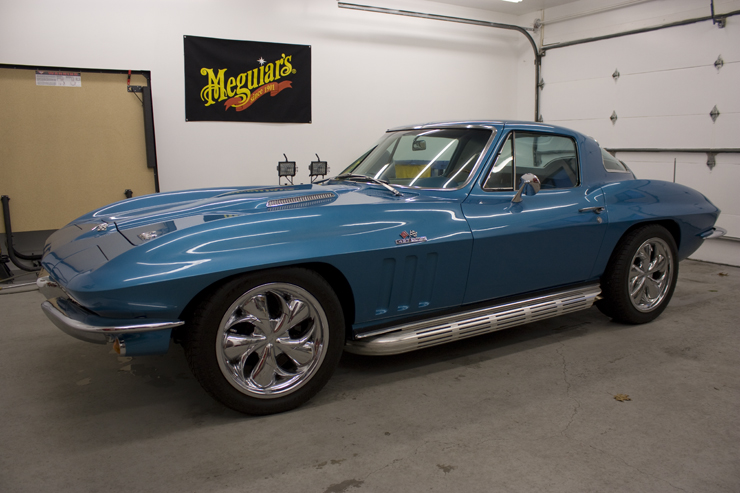
Let’s zoom in a little closer…
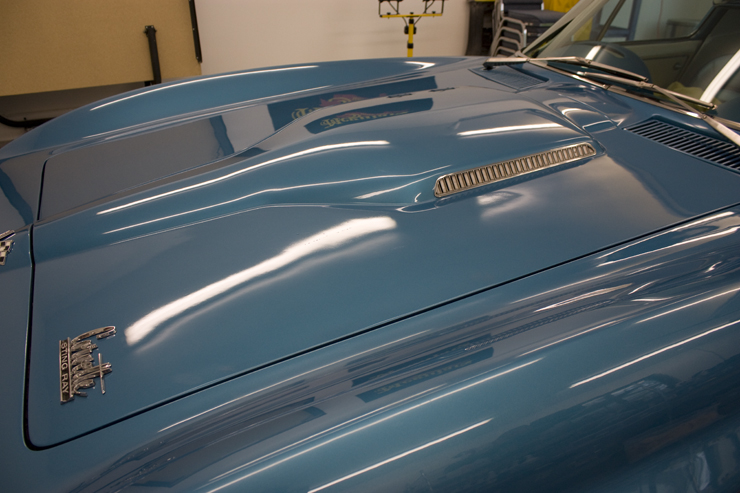
Even closer…still think it looks good?
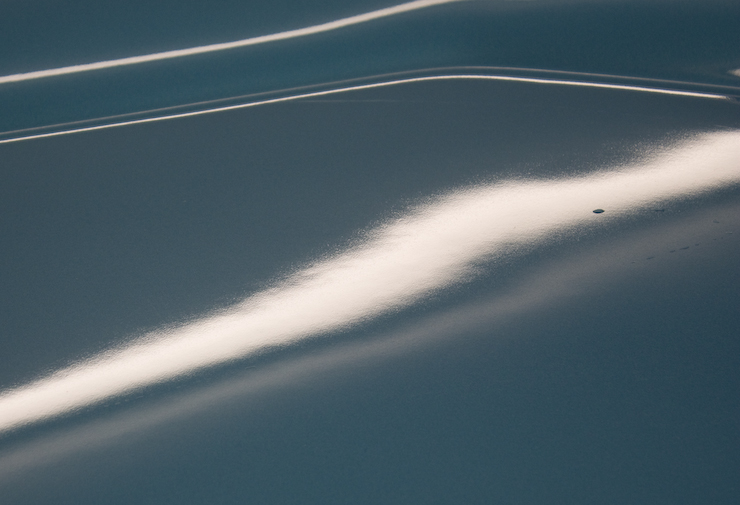
Now that were zoomed in close you can get a good idea of what I’m referring too, especially if you focus on the edge of the fluorescent light bulb in the reflection.
Here you can see the condition of the paint which really only had some moderate swirling that a 1 or 2 step correction would have easily removed.
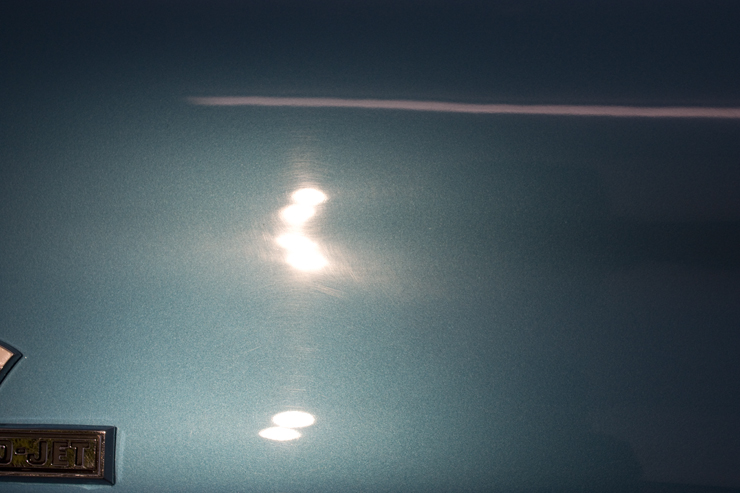
Another
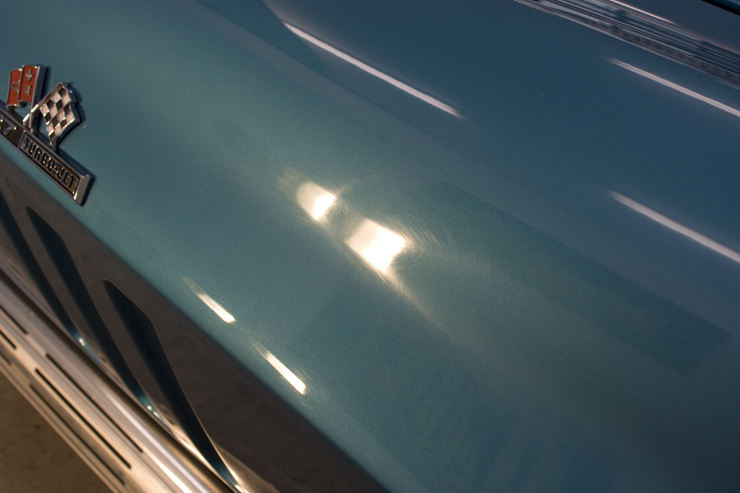
Here we can see some random deep scratches on the left rear panel which was likely caused by the rubber hose dragging over the paint while filling gas.
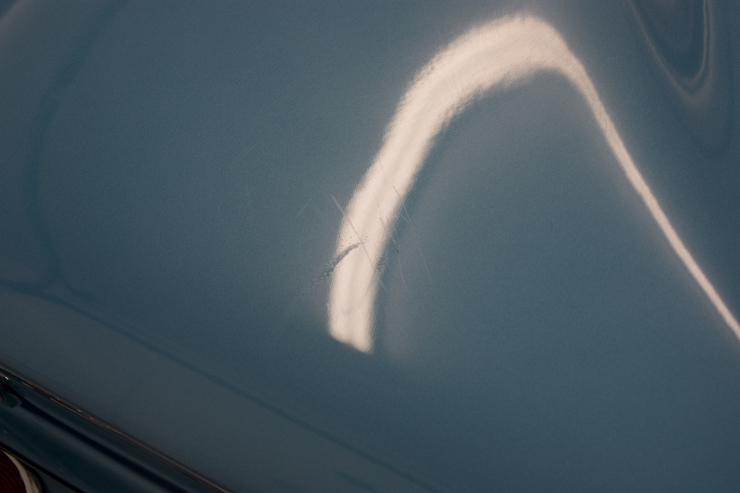
As you can imagine, the finish on this car really started to bother me since I knew I could make it look much better, but a simple 2 step correction was not the answer. After going round in round in my head about it I decided to call up the owner and discuss some possible options. I told him I really wanted to wet sand the paint, but that I was a little hesitant having no knowledge of how much paint was actually applied to the car during the restoration. On a typical car one would use a PTG (Paint Thickness Gauge) to measure the overall thickness of the paint. When I say typical I’m referring to a car where the body is made of metal, and not fiber glass like a Corvette. Unfortunately my PTG only works on ferrous and non-ferrous metals and I really didn’t feel like forking out $2000 for a high end ultrasonic PTG that is capable of reading various materials such as fiberglass. The owner however assured me that the painter had applied several coats of clear and that he was confident that there was more than enough material to work with. Though this made me feel a little more confident, I decided not to push my luck by risking a strike through from sanding too much.
Since this car has never seen rain from the day of the restoration, and it is always garaged, a simple wash with ONR was all that was needed followed by a light claying.
For the wet sanding of this car I chose to do the work by hand using a Meguiar’s foam sanding block wrapped with Meguiar’s 2000 grit paper, and then following that up with Meguiar’s 3000 grit paper. While I could have just stopped at the 2000 grit, it’s much easier to remove the sanding scratches when you follow with a 3000 grit or higher paper. As you can see below, I chose to tape off the edges to avoid the risk of a strike through. I also started off by only sanded the hood and then polishing a small spot to get an idea of how easy it would be to remove the sanding scratches. The last thing you ever want to do is wet sand an entire car only to find out that the removal of the scratches requires far more time and effort than you originally estimated…just a little tip I learned from a friend of mine. 😉
Taping up the edges
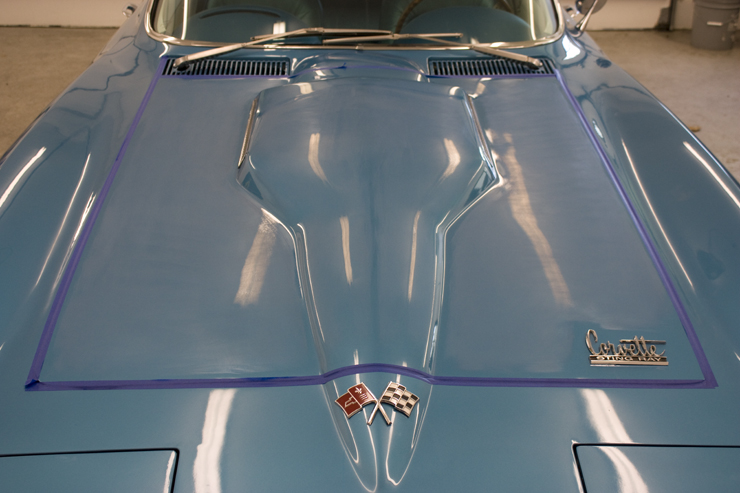
Testing a small spot on the paint to see how easy it would be to remove the wet sanding marks. The paint was actually pretty soft and it was very easy to remove the sanding marks.
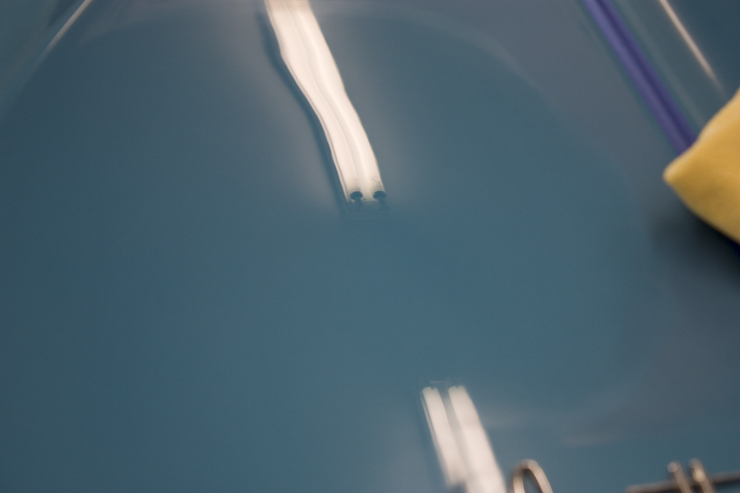
After all the sanding was done I moved onto polishing and removal of the wet sanding marks. This was done using the following steps
- Meguiar’s M105 on a rotary polisher equipped with a Meguiar’s Solo Heavy Cutting pad
- Meguiar’s M105 on a rotary polisher equipped with a LC orange pad
- Meguiar’s M205 on a rotary polisher equipped with a Meguiar’s W9207 Finishing pad
Here is a quick 50/50 shot of the fender half sanded and half all polished out.

After all the polishing was done I gave the car a thorough wash to remove all polishing dust. I touched up all the chrome using Klasse All In One. Glass was cleaned, and the tires were dressed using Meguiar’s Hyper Dressing mixed at a 3:1 ratio.
Now that the car is all done, how about some pictures where I zoomed in to show the texture difference before and after it was all wet sanded and buffed. 🙂
Hood before

Hood after
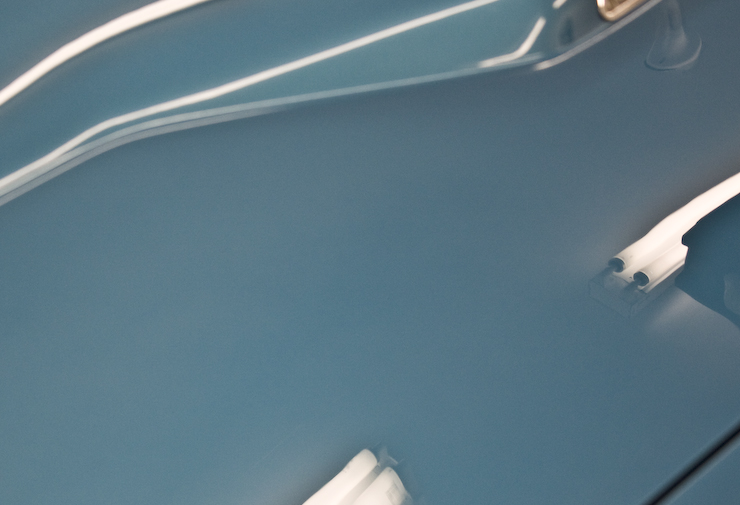
Roof before
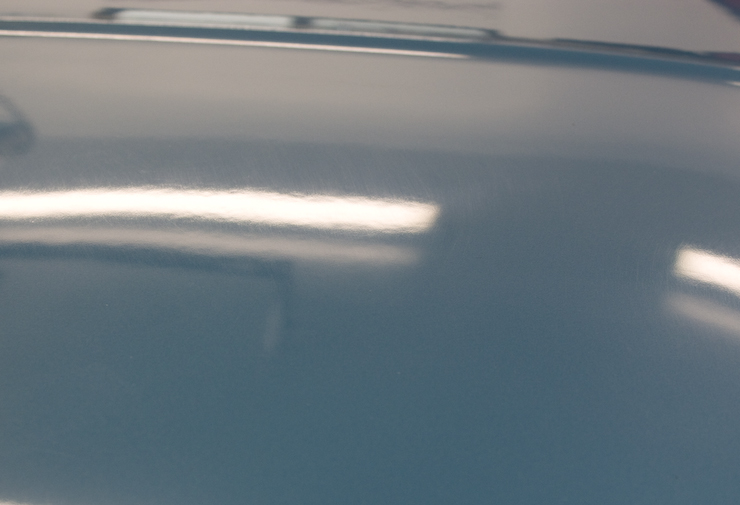
Roof after
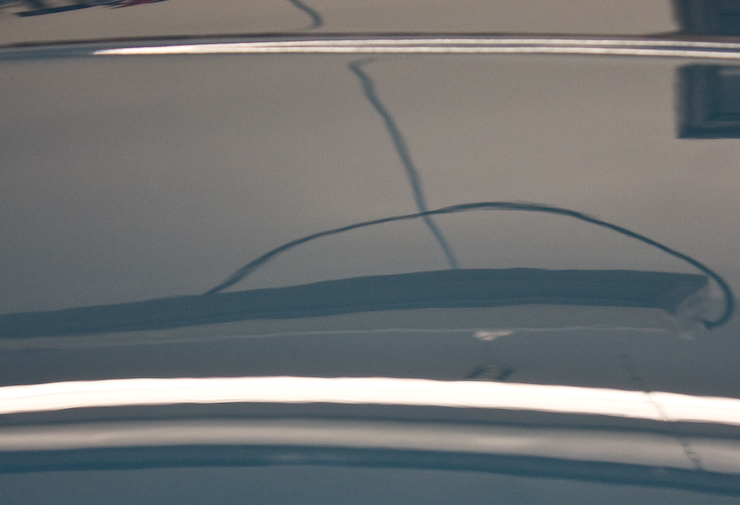
Left rear before

Left rear after

No more swirls

Now for some final after shots! 🙂
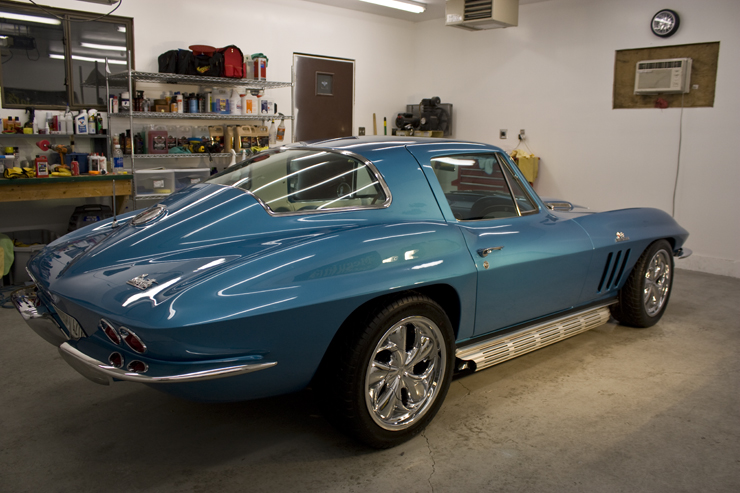
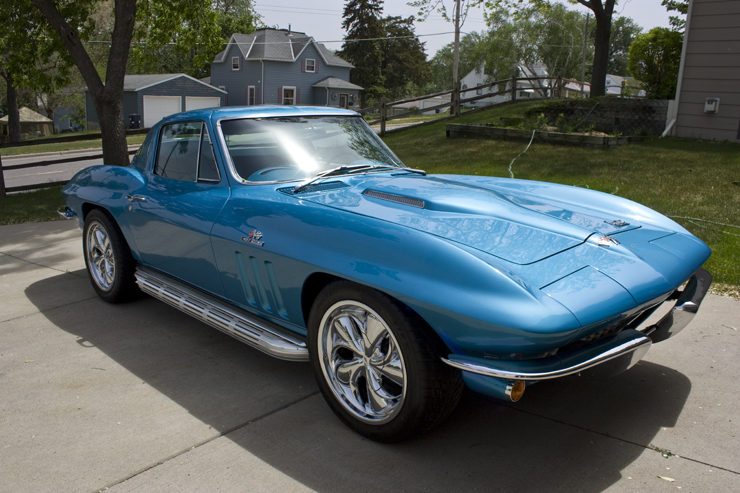
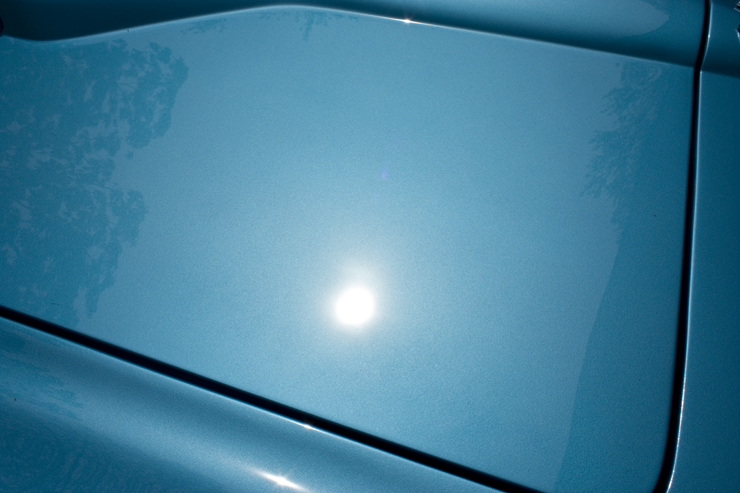
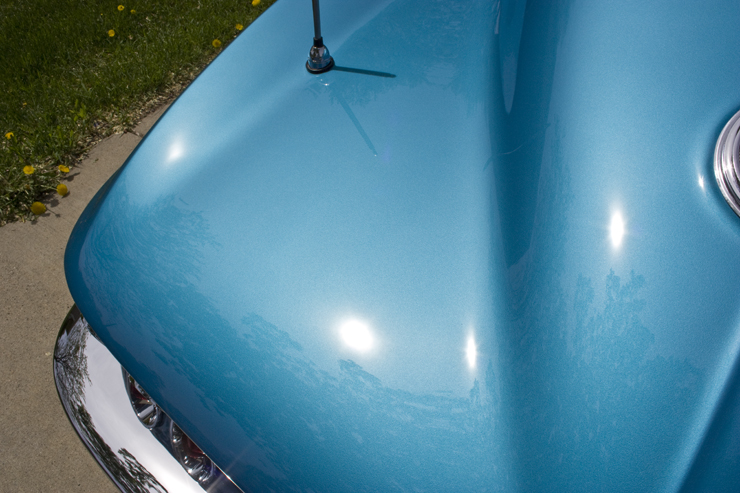
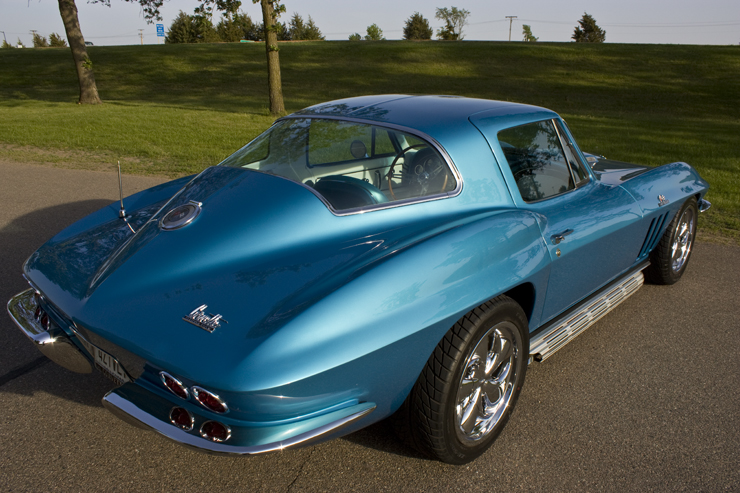

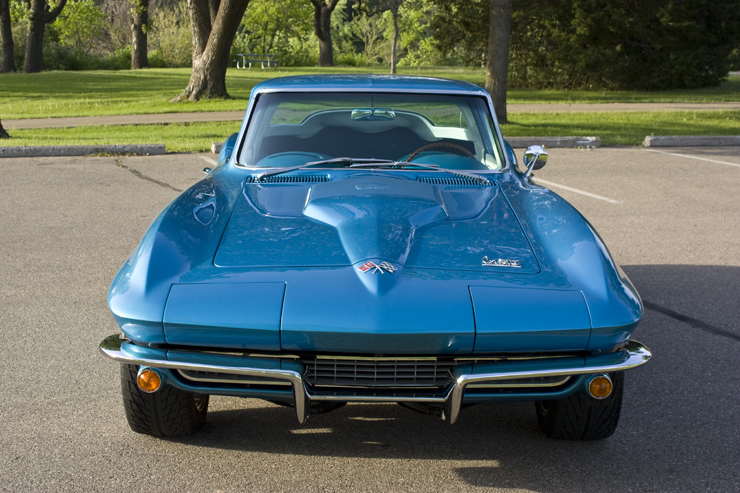
Of course I could never post a car of this caliber with out showing an engine shot…even though I didn’t need to clean it.
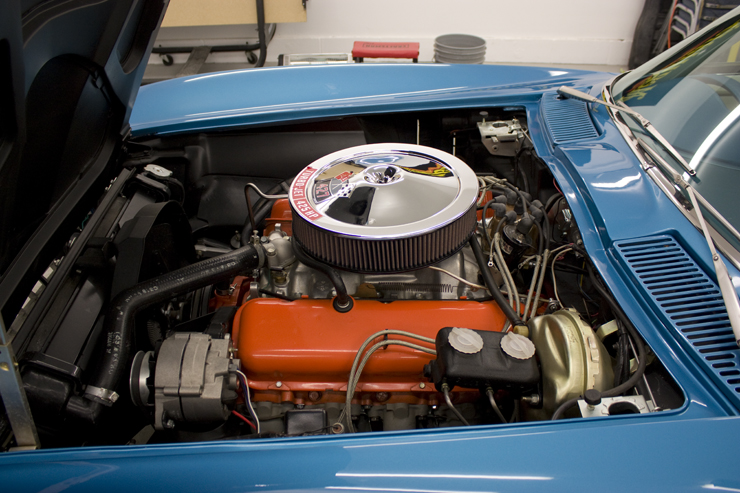
One of the undercarriage showing just how clean and nice this car really was.
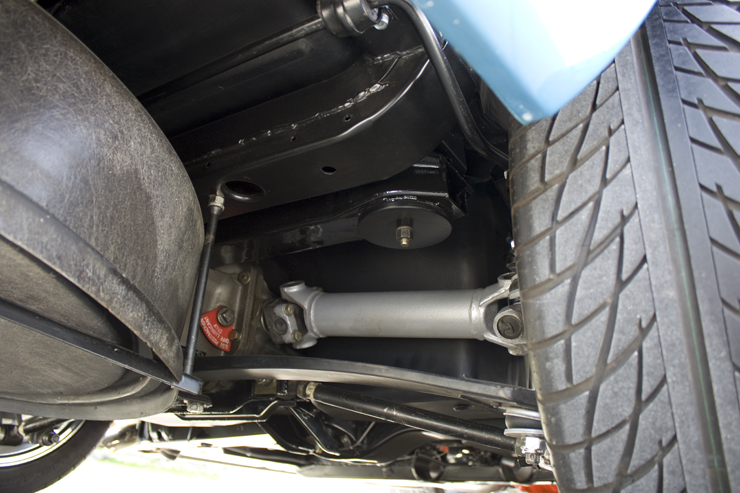
Thank you very much for taking the time to view my work. If you have any additional comments or questions, please submit them in the comment box below.









Great job!
Thanks Stelian! 🙂
Stunning! Very nice work, I’m sure the owner was thrilled with the result!
Thanks Joe! the owner was extremely happy and even allowed me to take the car for a spin. Nothing like the sound of a big block and side exhaust! 😉
Can you explain what paint shrinkage (sp?) is and how you would be able to determine that? The afters are stunning. I always love seeing 50/50 shots. Great job.
Hey Mo,
From what I understand the shrinkage is basically a result of the solvents in the paint escaping over time as it cures. While this is an exaggeration, try to think of it like a grape turning into a raisin. 😉
Cars painted at the factory are formulated differently then cars painted at a body shop. Factory finished cars are fully cured before they even leave the factory, where cars painted at the body shop will typically take 45-90 days to fully cure. Some may even take longer depending on several factors in the painting process. Often the shrinkage shows up as a ring around an area where body work has been done, or even as sanding marks below the paint likely in the primer or body filler. In the case of the Corvette it caused the overall texture to change.
Just for the record, I’m not a body man nor have I ever had any formal training in it. All my experience and knowledge comes from my father who has been doing body work for over 40 years now. 😉
Thanks again for all the feedback and I hope this helped with your question.
Rasky
Beautiful work there Rasky! It requires a high skill level (and a lot of patience) to completely wetsand and polish out a car, and the results on that Corvette were nothing short of spectacular.
Thanks for sharing!
Todd
Stunning work Rasky. This is a very time-consuming process that is potentially very dangerous, but when done by a professional like you; the results speak for themselves.
To comment on Mo’s question about paint shrinkage: Rasky is right on about solvents escaping from solvent based paints. Additionally, and where it more often causes problems, is from shrinkage of the layers under the clear-coat such as the primer/surfacer used.
Thanks Todd/Marc!
No doubt it’s a very time consuming process, not to mention hard on the body, but it’s all worth it once you’ve finished the final buffing step and you can admire the undistorted reflections in the paint! 😉
Rasky
Chad,
Excellent job documenting the process and the pictures are exceptional. It sure does take the patience and a special set of skills to produce results like that. The owner was in good hands. Great job!
DJ
Hi Chad,
Your write-up is very educational. I really enjoyed reading it. I was able to draw some parallels to the paint in this Corvette and some imperfections in the paint of my ’95 VW. Reading your article makes me want to wet sand the hood of my car. Thanks for passing on your experience.
Cheers,
Ron
Thanks for the positive feedback Ron! 🙂
If your VW still has the original paint on it I would advise against any wet sanding though as most OEM paints are very thin. It’s not that it can’t be done, but if you sand too much you run the risk of a strike through or even premature clear coat failure.
Thanks again,
Rasky
Chad- That is an amazing paint restoration- definitely alot of time in that.
I know it’s personal and would understand if you didn’t tell me, but how did you bill for that job?
Im asking because I have a customer with a Black Silverado SS that truly needs a wet sand, but have no idea what to charge for the service.
Thanks
Jeff
Thanks Jeff!
I bill wet sanding jobs by the hour as it’s much harder to estimate than a regular paint correction job where there is no wet sanding involved. I always do my best to give a ball park figure, but you really don’t know how long it will take until you start sanding. 😉
I say figure out what your time is worth based on your experience and give them a number.
Is the truck a repaint or does it still have the OEM finish?
Rasky
That’s an incredible job.
I’m dying to have my GTO wet sanded and polished, but I think it is way beyond my skill level. Looking at your work has given me inspiration to find someone to do it.
Thanks John,
If you car has been repainted and not wet sanded yet, I would definitely look into getting it done! What year GTO you have? I’m working on an old ’68 Firebird right now actually. 🙂
Rasky
Chad found your work and it looks great. I just learned about paint shrinkage first hand and am dealing with the people where I had it painted. They are restorers and called me crazy, so they wet sanded it and buffed it out to prove a point . . . only problem is they wet sanded down to the primer in some areas and now I am really upset with them and am trying to figure out how long my paint should have lasted. They also repairsed some body damage on my 89 Corvette and it cracked, so I guess they used bondo and no fiber glass.
Hey Bob,
Sorry to hear about the mess up on your car. There are a lot of factors that come into play and the sanding marks or paint shrink may not always be safely removed, as we’ve seen here. There are a lot of reasons you can experience paint shrink on repainted cars, most often it’s because of a rushed job where the shop is not allowing enough cure time of the primer between coats, wrong primers being used, or even the wrong reducers.
As far as the Corvette goes, well that’s just the nature of the beast with those cars and stress cracks are very common. I wouldn’t say it was because the shop used bondo…heck most those cars came from the factory with bondo on them. If you want more info shoot me an email to Chad@raskysautodetailing and I can get you in touch with my father…he’s been doing body work for over 40 years now and would be happy to answer any questions you may have. 😉
Rasky
Congratulations on the exceptional work, it’s really inspiring. I must also tip my hat at the high-quality photos. The compositions and backgrounds really help showcase the car and your work! Thank you for the write up, I learned some new things.